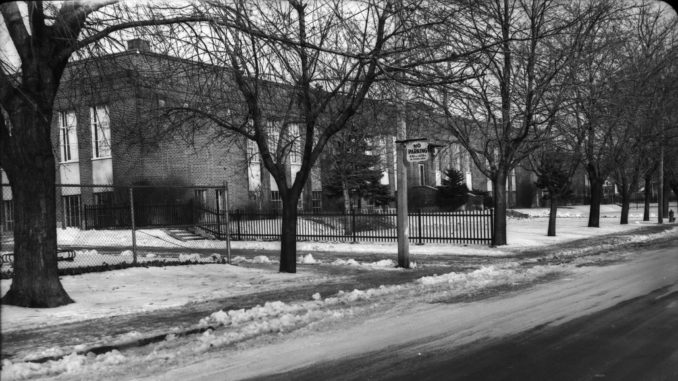
When the LRT and new condos are completed along Eglinton there won’t be space in our neighbourhood Leaside schools for hundreds of new students. The TDSB may have no other option but to bus these children across the city to schools with room. Why can’t we renovate or add to our existing schools to accommodate this need?
Education Development Charges legislation (EDCs) was put in place by the provincial government in 1998 to provide money for new schools in areas with new residential growth. As a result, school boards can access this source of revenue – but only under very specific conditions.
• The projected cumulative student population of all the schools in the geographical jurisdiction of the board has to exceed the cumulative capacity of all the school buildings for a period of five years either at the secondary or elementary level or both.
• Any revenue received must be used for the purchase of land only.
The TDSB will never be able to fulfill the first requirement. Since 1998 the school board has closed 35 school buildings because of declining enrolment. In 2018 the student population decline has subsided and there is a slight increase. However, there still remain schools with excess space – but closing neighbourhood schools has become increasingly problematic. New mid- and high-rise developments provide needed infill housing throughout the city, but often present unexpected population growth at existing schools.
The fluidity of demographics in Toronto is significant. If a school is closed now, where is the vacant land in our built-up neighbourhoods if a school is required at a later date? Presently, schools with healthy populations continue to operate in large buildings with excess student space providing excellent programs, but are often sharing rooms with child care centres, family literacy centres and social service agencies.
Having space in schools in North Etobicoke or East Scarborough does not help the enrolment pressures in Leaside schools, nor in other areas of high intensification.
The second condition is also a problem because it dictates how EDCs can be used – for the purchase of land only. Funds cannot be used for additions to schools or to refurbish schools to accommodate more students. According to the Ministry assessment of our schools, we have a backlog of 3.7 billion dollars in needed facility system repairs. EDCs cannot be used to renew our aging schools.
The Catholic board in Toronto can receive EDCs at the secondary school level while the public school board cannot, creating a significant inequity of funding opportunities. But despite additional revenue the Catholic board also finds EDCs restrictive since funds can only be used to purchase land. In Toronto there is little land to buy or it’s extremely expensive.
TDSB staff and trustees have been working with the Ontario Public School Boards’ Association, Fix Our Schools, and several passionate and knowledgeable Leaside parents to advocate for changes to the EDC rules. Toronto City Council has also provided unanimous support for changes to the EDCs.
With these efforts it seems as if this issue is now on the radar of provincial representatives from all parties including our own MPP (and Premier) Kathleen Wynne.
Gerri Gershon is the Trustee, Don Valley West, for the Toronto District School Board.





